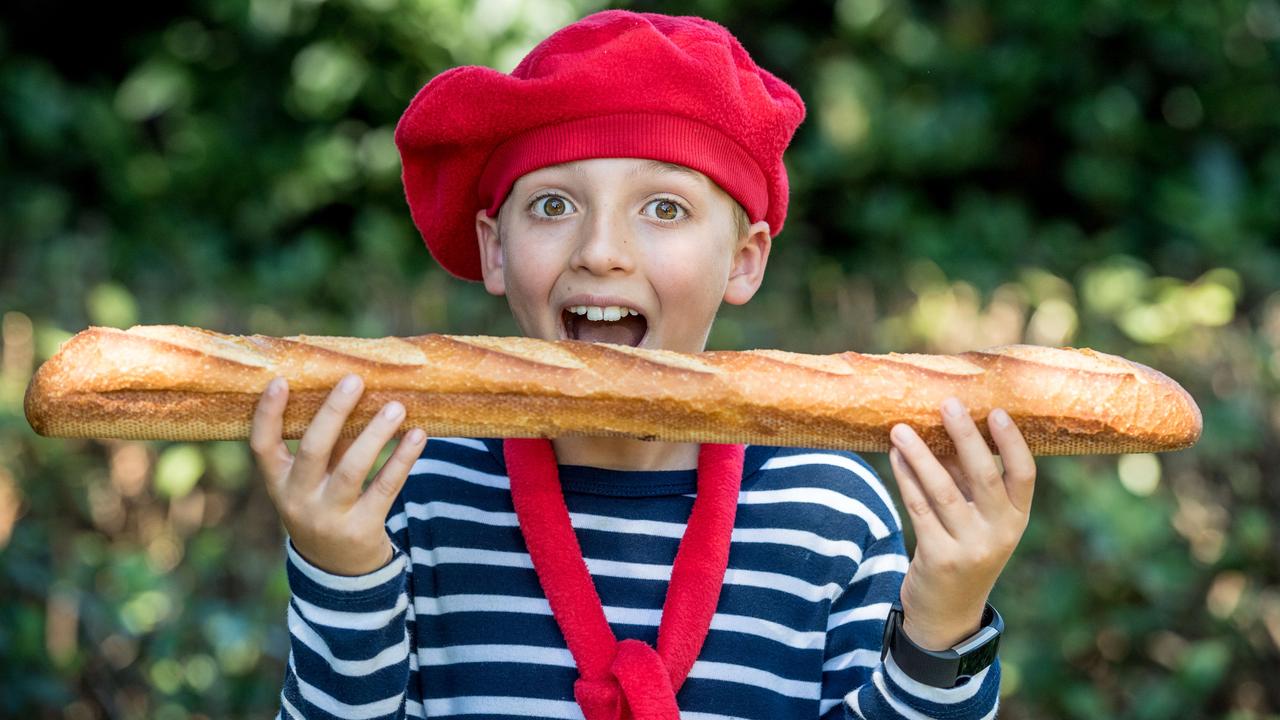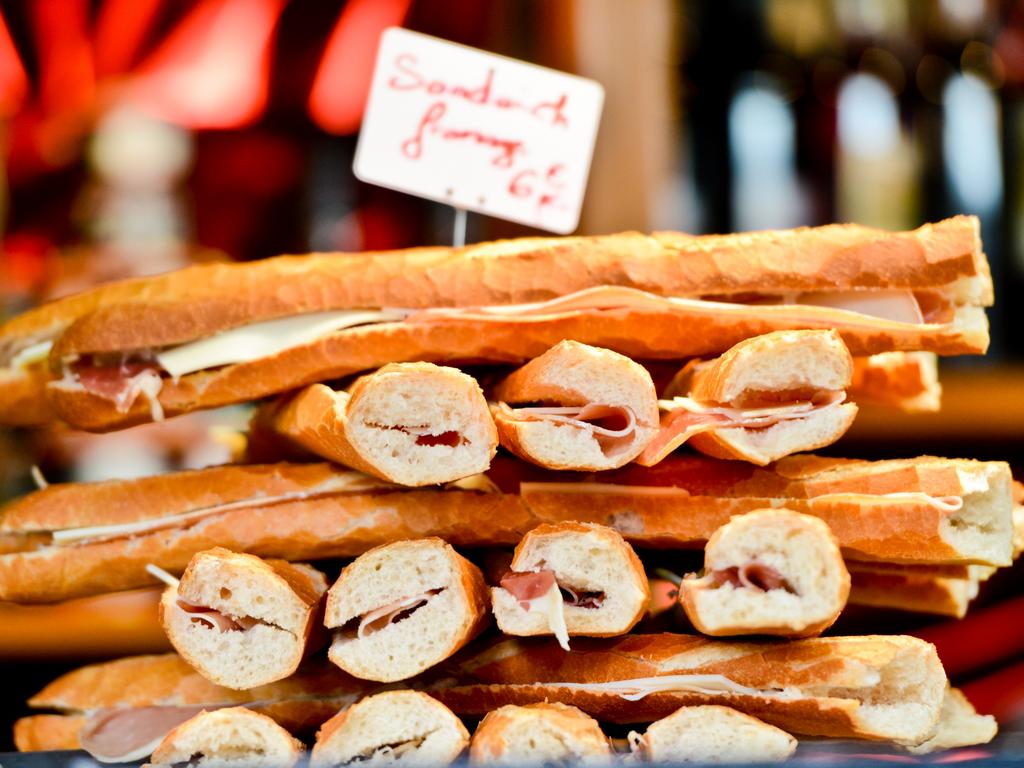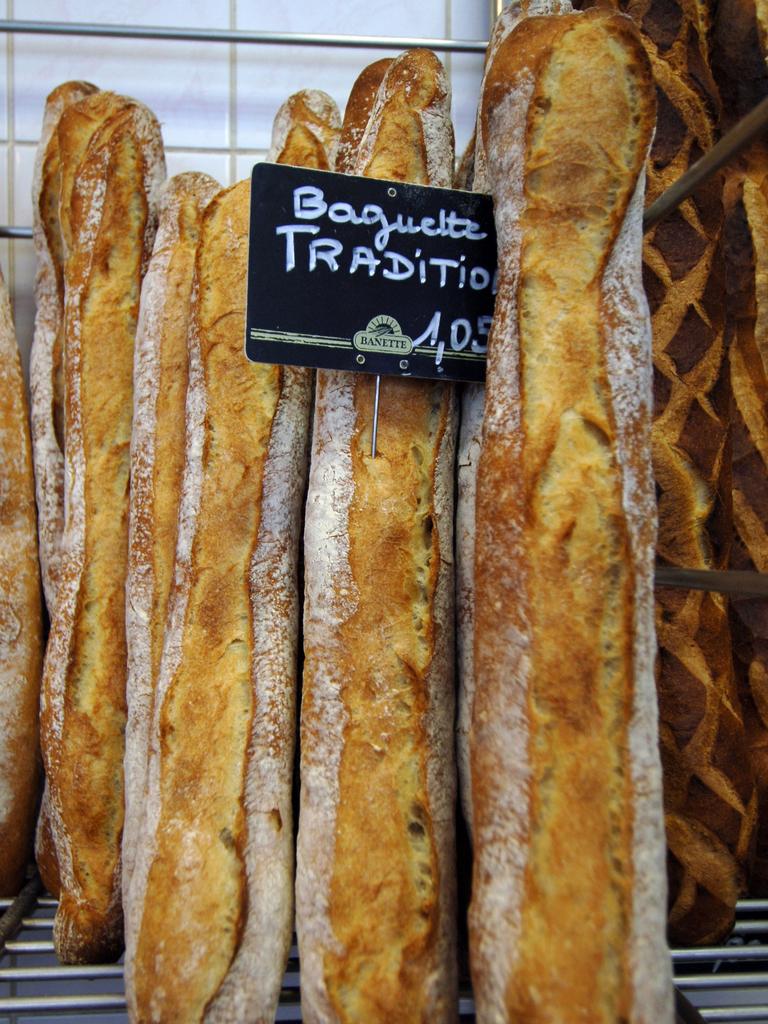Bakers delight as French baguette makes World Cultural Heritage list
The special significance of the humble baguette, a daily staple in France for more than a century, has earned the long white loaf a coveted spot on UNESCO’s Intangible Cultural Heritage list

READING LEVEL: GREEN
The humble baguette, France’s staple* bread, has made the United Nation’s cultural heritage* list, delighting French bakers and non-bakers alike.
Paris-based UN heritage body UNESCO* on Wednesday voted to include the “artisanal* know-how and culture of baguette bread” on its list of Intangible* Cultural Heritage, which already includes around 600 traditions from over 130 countries.

The listing “celebrates the French way of life: the baguette is a daily ritual, a structuring element of the meal, synonymous* with sharing and conviviality*,” said UNESCO chief Audrey Azoulay.
“It is important that these skills and social habits continue to exist in the future,” she said.
The baguette, a fluffy, long loaf of bread with a crunchy crust, is a symbol of France around the world and has been a central part of the French diet for at least 100 years.

Christophe Moussu, a teacher at the renowned Ferrandi culinary* school in Paris, announced the news to his baguette-baking class.
“Ladies and gentlemen, that’s it, we’re in the UNESCO (World Cultural Heritage list), it’s been recognised,” Mr Moussu said, to cheers from his students. “I’m very happy.”
One student, 54-year-old Patricia Filardi, tried to explain what makes the baguette so special.
“It’s about the crunch of the baguette, the soft side of the crumb … It’s extraordinary,” she said.

A baguette – which means “wand” or “baton” – is sold for around 1 euro (AUD $1.50) each.
Although baguette consumption has declined over the last decades, France still makes around 16 million loaves per day – that’s nearly six billion baguettes a year – according to a 2019 estimate by financial consultancy* Fiducial.
“I’m very happy because it represents France well,” said Parisian pensioner Marie-Dominique Dumas, as she exited the bakery where she buys a baguette every other day.

Made only with flour, water, salt and yeast, baguette dough must rest 15 to 20 hours at a temperature between four and six degrees Celsius, according to the French Bakers Confederation*, which fights to protect its market from industrial bakeries.
But if the ingredients are always the same, each bakery has its own subtle* style, and nationwide competitions to find the best baguette in the land are held each year.

Myths* abound over the origins of the baguette. One legend has it that Napoleon Bonaparte’s* bakers came up with the long, thin shape to make it easier for his troops to carry, while another claims that it was actually an Austrian baker named August Zang who invented the baguette.
GLOSSARY
- staple: a basic food, or a main, common product or material
- heritage: cultural features like important traditions, languages and buildings
- UNESCO: United Nations Educational, Scientific and Cultural Organization
- artisanal: made in a traditional way by someone skilled with their hands
- intangible: something that exists but can’t be touched, exactly described or given exact value
- synonymous: two things so closely connected that one suggests the other
- conviviality: quality of being friendly and making people feel happy and welcome
- culinary: connected with cooking and kitchens
- consultancy: company that gives expert advice on a particular subject
- confederation: different groups working together for business or political reasons
- subtle: small but important, not overt but still meaningful
- myths: traditional stories of early history or cultural beliefs and practices
- Napoleon Bonaparte: French military general and statesman, Emperor Napoleon I (1769-1821)
EXTRA READING
Look who has Australia’s healthiest lunch boxes
Turn a fast food favourite into a healthy feast
QUICK QUIZ
- What is the name of the official UNESCO list that now includes the French baguette?
- How long does baguette dough need to rest and at what temperature?
- What is the legend of Napoleon Bonaparte’s bakers?
- How many baguettes does France make per day?
- How long has the baguette been a central part of the French diet?
LISTEN TO THIS STORY
CLASSROOM ACTIVITIES
1. Add to the list
Can you think of anything Australian that should be on the Intangible Cultural Heritage list? It doesn’t have to be food. Choose an item and write a letter to UNESCO. The purpose of your letter is to convince them to add your choice to the list.
Time: allow 10 minutes to complete this activity
Curriculum Links: English; Geography; History
2. Extension
“Baguettes can’t be cultural heritage, they’re just bread!” Do you agree or disagree with this statement? Write a list of reasons for or against.
Time: allow 40 minutes to complete this activity
Curriculum Links: English
VCOP ACTIVITY
BAB it!
Show you have read and understood the article by writing three sentences using the connectives “because’’, “and”, and “but” (BAB).
Your sentences can share different facts or opinions, or the same ones but written about in different ways.
What can you come up with?
Remember to use your VCOP editing skills to read aloud, edit and up-level.

